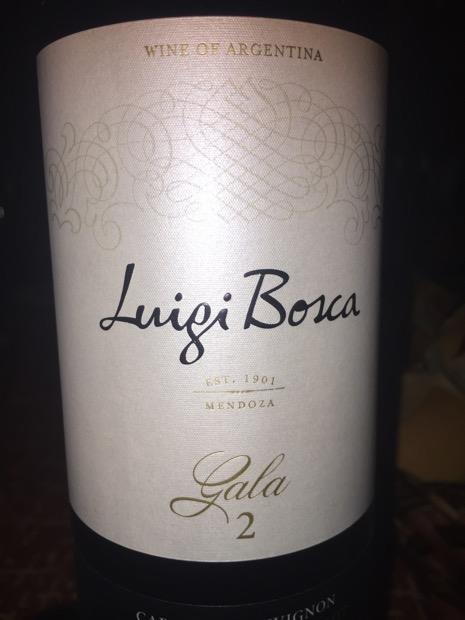
External search
Google (images)
Wine Advocate
Wine Spectator
Burghound
Wine-Searcher
Vintages
2018
2017
2016
2015
2014
2013
2012
2011
2010
2009
2008
2007
2006
2005
2004
2003
2002
From this producer
Show all wines
All tasting notes
|
| Drinking Windows and Values |
| Drinking window: Drink between 2017 and 2023 (based on 30 user opinions) |
| Community Tasting History |
| Community Tasting Notes (average 88.9 pts. and median of 89 pts. in 8 notes) - hiding notes with no text | | | Tasted by sortcode on 12/31/2021 & rated 89 points: 31.12.2021:CabF+M, süße dunkle Kirschen, schön dicht, nach 1h CabF im Vordergrund, dicht und cremig, gelitert, nach 2h+ dekant top, jetzt 1A zum trinken, dezent unbalanciert, sehr gut gereift, bis 2025, $AR300 (331 views) | | | Tasted by ThalesGaspar on 11/15/2018 & rated 90 points: A very good wine vintage after vintage. Excellent with a steak. (598 views) | | | Tasted by Ben85 on 10/25/2016: VGV Bdx Blend. Classic aromatics, but restrained on the palate with fine-grained tanins. Very well-put together. Very good now with a good steak but have no doubt this will age very well indeed. (989 views) |
| Luigi Bosca Producer websiteRed Blend.Argentina Wines of Argentina
Argentina has been making wine since the 1500s, tracing its wine heritage back to Spain, France and, perhaps surprisingly, Italy. Italian immigration is second only to Spanish in Argentine culture, and the flavors of Italy show up strongly in the nation’s wine, food and cultural tradition. Historically, Argentina has kept much of its wine consumption at home, drinking most of the wine it makes. But we are now seeing more very serious Argentine wines north of the border, and Malbec is leading the movement. The wine-making region in Argentina ranges between the 22° and 42° South latitude. It spreads at the foothills of the Andean mountain range along over 2,400 km; from the province of Salta to the province of Río Negro, with a variety of climates and soils that makes each region a unique land. In general terms, the areas dedicated to vine cultivation are dry and arid with a low level of rain and humidity, determining factor as regards grape health. Abundant sunny days and thermal amplitude favor a good maturity and concentration of aroma and color in the grain. Soils are deep, permeable and poor in organic matter, decisive qualities at the time of obtaining good wine. Due to the low rain regime, irrigation is necessary. Water comes from the Andean range thaw, descending in the shape of rivers to become channels or ditches. Undoubtedly, the combination of these factors turns Argentina into a veritable oasis for the highest quality wine-making. Nevertheless, there is still a long way to go. Wine-making in Argentina, at the level that it achieves today, has a young history that goes back to a little more than 10 years ago. Technological progress, investment and some farsighted businessmen enabled a determining transformation. The province of Mendoza is the most traditional area in the viticultural industry, and is diverse enough to be divided into zones, according to their significantly different weather, height and soil characteristics. These include the Northern Zone, which is suitable for fruity whites and young reds, at a height from 600 to 700m; the Eastern Zone, with a height ranging from 600 to 700m, and the most productive zone in the province; the Uco Valley, a zone of colder weather and higher altitudes (between 800 and 1,400m over sea level); San Rafael, with heights ranging from 450 to 800m; and the High Zone of the Mendoza River, with heights ranging from 800 to 1,100m over sea level and various microclimates, this is the zone where almost all noble varieties have easily become adapted. It is a region that is remarkably well-suited to vine culture, protected from the Pacific’s cooling influence by the Andes and enjoying a long summer of cool nights and warm days, with a dry summer climate but plenty of water available from the region’s rivers. Malbec in particular is outstanding from this area, and it has clearly emerged as the star, the darling of both consumers and critics.Mendoza Wines of Mendoza |
|




